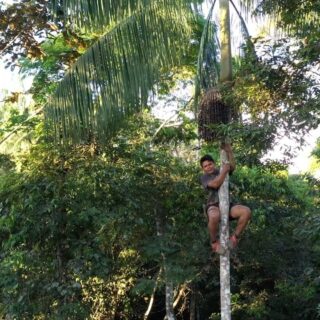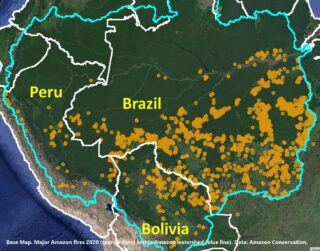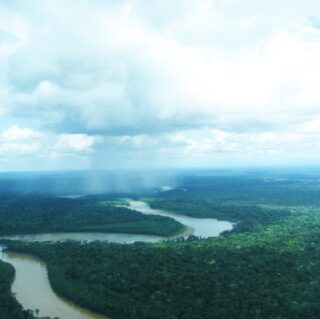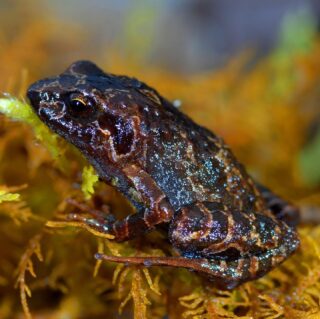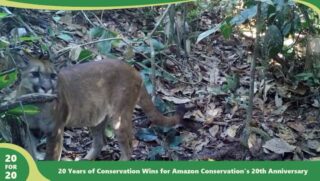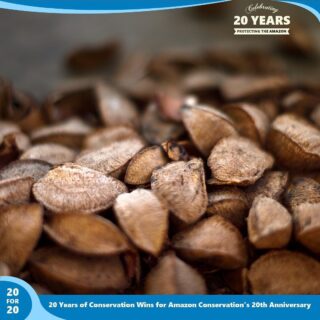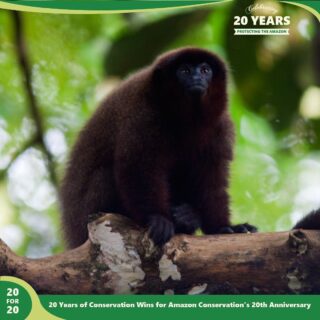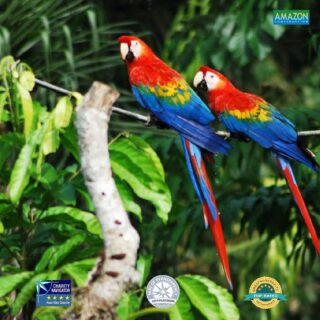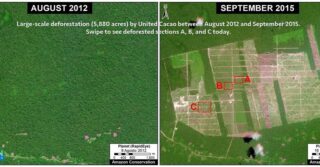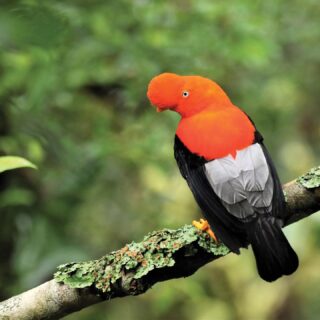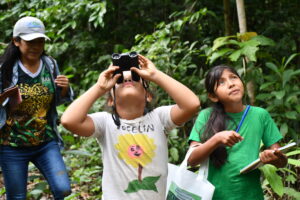 As we enter a fast-growing digital landscape, many organizations and non-profits have begun exploring new ways to secure funding to broaden their impact. Earlier this year, we implemented a new donation tool called The Giving Block that streamlines cryptocurrency and stock donations to Amazon Conservation. Cryptocurrency and stock donations have now become powerful tools that reshape the way charitable contributions are made, providing tax benefits that non-cash donations offer.
As we enter a fast-growing digital landscape, many organizations and non-profits have begun exploring new ways to secure funding to broaden their impact. Earlier this year, we implemented a new donation tool called The Giving Block that streamlines cryptocurrency and stock donations to Amazon Conservation. Cryptocurrency and stock donations have now become powerful tools that reshape the way charitable contributions are made, providing tax benefits that non-cash donations offer.
Why did we decide to start accepting these donation methods? Accepting cryptocurrency and stock donations can be highly beneficial for both us and donors.
- Diversifying Donation Methods: Accepting cryptocurrencies and stock donations can help us become less reliant on traditional forms of fundraising, creating a more stable and secure financial base
- Lower Fees and Transaction Costs: There are often lower fees in cryptocurrency transactions and stock donations compared to traditional banking and credit card transactions, meaning more of the donation can go directly to our conservation work rather than a third-party holder
- Potential for High Donations: Some stocks and cryptocurrencies such as Bitcoin and Ethereum have had significant increases in their value over time. Especially with crypto, those who contribute could donate more than what they traditionally would in regular currency donations, especially if these assets have been held for a while
- Donor Tax Benefits: In some countries, donating cryptocurrency or stock can have tax advantages for the donor. By accepting these kinds of donations, we now have the potential to attract donors who are looking for ways to maximize their charitable contributions while optimizing their tax liabilities
- Transparency and Accountability: Blockchain technology can help secure and publicly verify digital transactions, allowing donors to see how exactly their contributions are being used by us, and thus creating trust with the donor
- Appeal to Younger Demographics: Accepting cryptocurrency and stock donations can be seen as a modernized approach to tech-savvy and younger donors familiar with digital currencies and assets, helping us reach out to a demographic that may not be used to traditional fundraising and donation methods
While there are many beneficial reasons for us to accept crypto and stock donations, we acknowledge that we must consider the volatility of the value of these assets. For more information on our cryptocurrency and stock donations, please visit our page here to learn more.

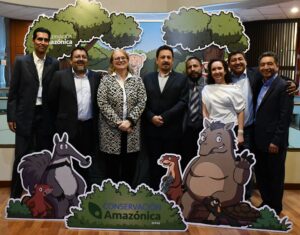
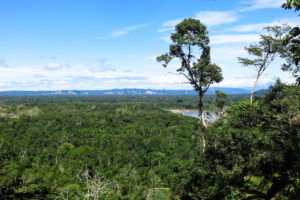
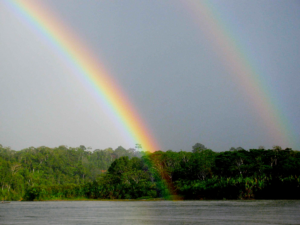

 These agreements will later serve as a foundation in support of achieving, through a strategic alliance, the development of synergies for the implementation of actions, planning projects, and comprehensive management of natural resources, as well as actions aimed towards conservation in these municipalities.
These agreements will later serve as a foundation in support of achieving, through a strategic alliance, the development of synergies for the implementation of actions, planning projects, and comprehensive management of natural resources, as well as actions aimed towards conservation in these municipalities.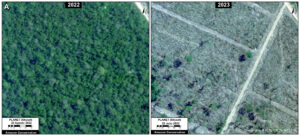
 From August 24th – 26th, our Peruvian sister organization
From August 24th – 26th, our Peruvian sister organization 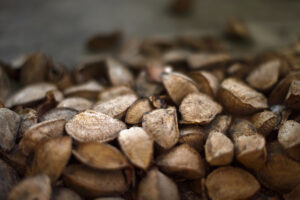 These flagship products come from the Madre de Dios region in Peru, where there is a high concentration of trees for harvesting at an economic scale. They are the only species in the global nut market whose production is not cultivated, and can only be harvested in the wild. Harvesting season is between December through March, and can be eaten raw, or toasted.
These flagship products come from the Madre de Dios region in Peru, where there is a high concentration of trees for harvesting at an economic scale. They are the only species in the global nut market whose production is not cultivated, and can only be harvested in the wild. Harvesting season is between December through March, and can be eaten raw, or toasted. Açaí berries are produced in dense branch clusters called ‘panicles’ that contain 500 to 900 fruits each. There is also a green variety called Açaí Tinga that only grows in one Amazon estuary. Asaí Euterpre Precatoria is the species most found in the Bolivian Amazon and has a greater concentration of nutrients. These special fruits have a small window for freshness once harvested, which is why imported Açaí products are often found in powdered or frozen forms. Recently, the growth in Açaí’s popularity predicts the market for this product to reach 1.7 billion by 2028
Açaí berries are produced in dense branch clusters called ‘panicles’ that contain 500 to 900 fruits each. There is also a green variety called Açaí Tinga that only grows in one Amazon estuary. Asaí Euterpre Precatoria is the species most found in the Bolivian Amazon and has a greater concentration of nutrients. These special fruits have a small window for freshness once harvested, which is why imported Açaí products are often found in powdered or frozen forms. Recently, the growth in Açaí’s popularity predicts the market for this product to reach 1.7 billion by 2028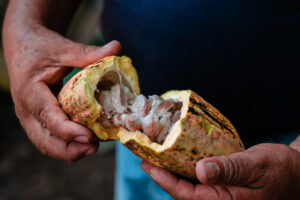 You may know Cacao as a wonderful source of chocolate, but did you know it also is one of the richest antioxidants on earth? These tropical fruits grow in altitudes of 30 – 300 m, and its trees produce roughly 70 fruits annually. There are two ‘flush’ harvesting seasons that last from October to February, and May to August. Upon harvesting, its seeds are fermented for 1-7 before being dried, roasted, and either ground to a powder or winnowed into nibs. Not only is cacao useful for consumption, but cacao trees are also considered a shade crop that provides habitat for other plants and animals.
You may know Cacao as a wonderful source of chocolate, but did you know it also is one of the richest antioxidants on earth? These tropical fruits grow in altitudes of 30 – 300 m, and its trees produce roughly 70 fruits annually. There are two ‘flush’ harvesting seasons that last from October to February, and May to August. Upon harvesting, its seeds are fermented for 1-7 before being dried, roasted, and either ground to a powder or winnowed into nibs. Not only is cacao useful for consumption, but cacao trees are also considered a shade crop that provides habitat for other plants and animals. Aguaje is the fruit of the Moriche palm found throughout swamps across South America. The fruit offers a variety of flavor combinations, being sweet, salty, and mildly acidic. Some describe the taste as being similar to carrots when eaten raw. The palm goes by various names based on the country, including canangucho (Colombia), morete (Ecuador), or aguaje (Peru), and Palma Real (Bolivia).
Aguaje is the fruit of the Moriche palm found throughout swamps across South America. The fruit offers a variety of flavor combinations, being sweet, salty, and mildly acidic. Some describe the taste as being similar to carrots when eaten raw. The palm goes by various names based on the country, including canangucho (Colombia), morete (Ecuador), or aguaje (Peru), and Palma Real (Bolivia).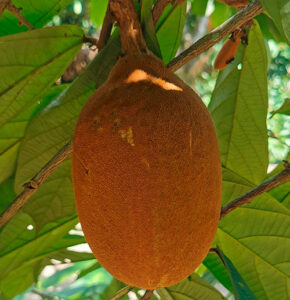 Also known as cupuaçu, Copoazú is the national fruit of Brazil. This fruit is closely related to Cacao and emits an aroma of pineapple and chocolate when opened. Many have described it as tasting similar to chocolate with notes of tropical melon flavors. The seed can also be harvested to make butter that is good for skin and hair health.
Also known as cupuaçu, Copoazú is the national fruit of Brazil. This fruit is closely related to Cacao and emits an aroma of pineapple and chocolate when opened. Many have described it as tasting similar to chocolate with notes of tropical melon flavors. The seed can also be harvested to make butter that is good for skin and hair health.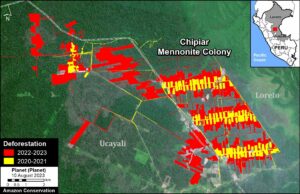
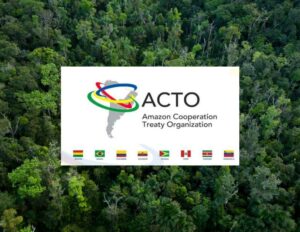

